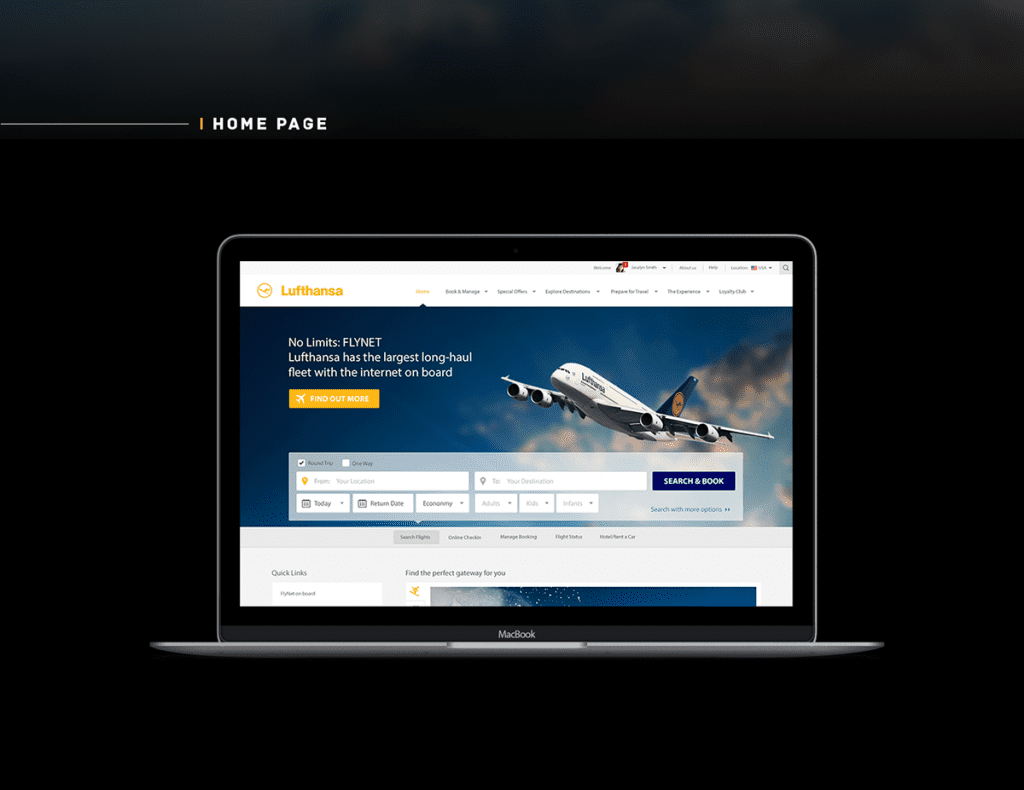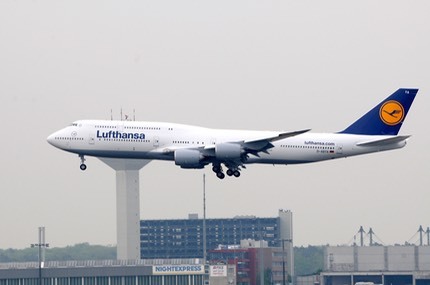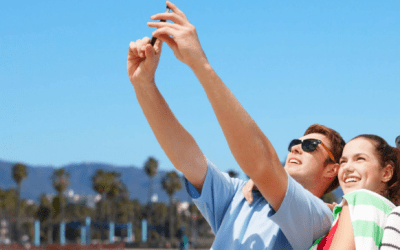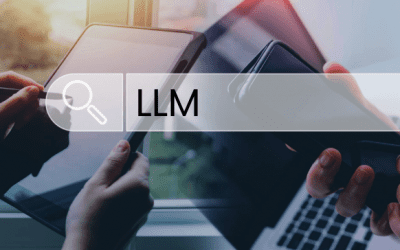Landing pages have become one of the most important digital assets for brands in the tourism sector. In Lufthansa’s case, the German airline has committed to a coherent, functional, and user-centered online experience. This analysis dives into the key aspects that shape its landing pages—from design and usability to personalization, SEO, and technological innovation.
Design and Usability: Clear Structure and Functional Focus
Lufthansa’s landing pages stand out for their clean and professional design. The corporate color palette (blue, white, and grey) conveys trust and seriousness, in line with its brand positioning.
The navigation menu is simple, with no distracting elements. Users can start a booking, view offers, manage flights, or log into their account quickly. The responsive design ensures a smooth experience across all devices, which is essential given the growing mobile traffic in the airline sector.
However, some usability evaluations have identified friction points. For instance, the absence of a visible “Back” button in the booking flow or the cognitive load on the flight summary page may present minor conversion barriers.

Conversion Strategies: Effective CTAs and Optimized Booking
Lufthansa’s landing pages are clearly designed with conversion in mind. From the outset, visitors encounter simplified forms to search and book flights.
Call-to-action (CTA) buttons are well positioned and use straightforward language such as “Book now” or “Discover our offers.” These are reinforced with exclusive promotions and discounts for users registered in the Miles & More loyalty program.
Lufthansa also applies urgency and scarcity principles with messages like “last seats” or “special fares for a limited time,” which help boost conversion rates.
Storytelling and Visual Content: Emotion Meets Function
The airline effectively integrates impactful visual elements in its content campaigns. A strong example is the “Every Story Starts with a Yes” initiative, which combines inspirational videos with emotional narratives designed to spark wanderlust.
Images featured on the landing pages highlight both destinations and the onboard experience, building user trust. These visual elements are carefully placed to avoid clutter and enhance brand storytelling.
While the narrative leans more functional than aspirational, it effectively conveys Lufthansa’s core values: reliability, global reach, and premium service.
Social Media and Digital Marketing: Omnichannel Connection
Lufthansa maintains an active presence on platforms like Instagram, Facebook, Twitter, and LinkedIn. Through these channels, it promotes seasonal campaigns, fleet updates, and innovative services—driving traffic to targeted landing pages.
User-generated content (UGC) is also leveraged to reinforce brand authenticity. Traveler stories and photos are integrated into some pages, enhancing user trust.
Within its digital marketing strategy, Lufthansa also uses remarketing to reconnect with users who abandoned a landing page without converting, serving them personalized ads on social platforms and Google Ads.
Personalization and Segmentation: Tailored User Experiences
A key strength of Lufthansa’s digital strategy is its commitment to personalization. Through the Kibo Personalization platform, the airline adapts content and offers based on user behavior and geolocation.
For example, a user visiting from Spain will see relevant routes, localized messaging, and regional offers. This segmentation greatly improves message relevance and conversion rates.
Personalization also extends to the user login experience, where frequent flyers receive tailored recommendations based on their travel history, accumulated points, or favorite destinations.
Web Design Trends: Minimalism and Mobile-First Approach
Lufthansa’s landing pages reflect major web design trends in the travel industry. The layout is minimalist, with generous white space, clear typography, and a well-defined visual hierarchy.
The mobile-first design is evident throughout. All pages are fully optimized for smartphones and tablets, with adaptive menus, large buttons, and fast load times.
Subtle microinteractions are also integrated—such as hover effects and animated scrolls—which enhance the user experience without slowing performance.
SEO, SEM, and Metrics: Visibility and Continuous Optimization
On the SEO front, Lufthansa structures its URLs well, uses optimized meta tags, and publishes multilingual content—supporting strong international search visibility. It also maintains landing pages tailored to popular search queries like “cheap flights to Berlin” or “fly to Asia with Lufthansa.”
In terms of SEM, the airline invests heavily in Google Ads and other platforms to promote strategic routes and offers. These campaigns typically link to landing pages adapted to each market segment.
According to tools like SEMrush and Sistrix, Lufthansa enjoys high search visibility, although some product pages reveal opportunities for improvement in load speed and keyword density.
Technological Innovation: Beyond Traditional Booking
Lufthansa actively explores emerging technologies to enhance user experience. Through its Innovation Hub, it has experimented with formats like augmented reality, virtual assistants, and even in-flight innovation labs (FlyingLab), where new tech solutions are tested onboard.
The use of chatbots and automated help centers on its landing pages supports real-time assistance, reducing the need for human intervention in early customer interactions.
The airline has also implemented digital wallets, automated baggage tracking, and touchless experiences across its mobile interfaces and airport kiosks—aligning with its broader digital transformation strategy.

Lufthansa’s landing pages reflect a robust digital strategy focused on functionality, conversion, and personalization. While its storytelling is less aspirational than some other brands in the travel space, it excels in delivering a smooth user experience, mobile adaptability, and a clear emphasis on innovation.
For tourism marketers, Lufthansa stands out as a compelling case study on how to balance technology, conversion, and brand experience in digital channels.






